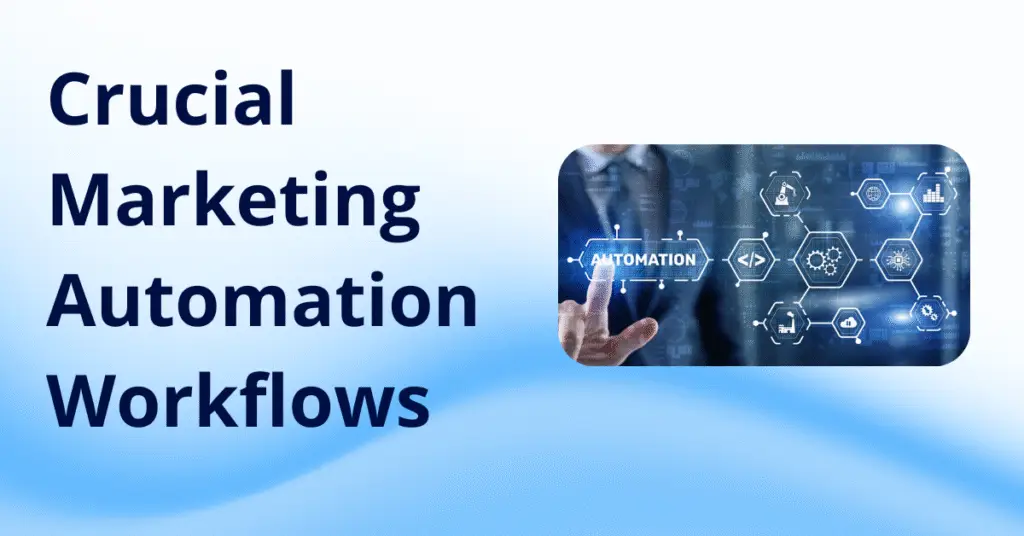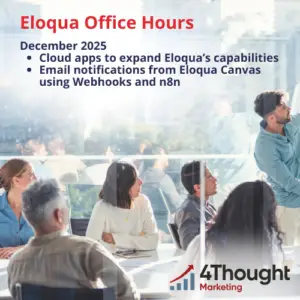
Key Takeaways
- Align automation steps with customer journey goals.
- Start with welcome, nurture, and re-engagement flows.
- Unify channels and timing for smooth orchestration.
- Segment leads and score engagement smartly.
- Refine workflows through testing and feedback.
Marketing automation has matured from simple email triggers into intelligent systems that guide every customer interaction. Yet many organizations still rely on partial setups that miss strategic opportunities. Understanding and implementing the crucial marketing automation workflows gives marketers a framework to connect every touchpoint, reduce manual errors, and deliver consistent, personalized experiences at scale. This article explores the essential workflows that turn automation into orchestration; bringing structure, segmentation, and continuous optimization to your marketing strategy.
What Defines a Marketing Automation Workflow?
A marketing automation workflow is a structured series of actions triggered by specific audience behavior or data points. Each workflow combines triggers, conditions, delays, and actions that work together to move a prospect through the customer journey. When built strategically, these workflows deliver the right message at the right time without manual effort while maintaining a sense of personalization. They are not just automated emails. They are systematic pathways that nurture, qualify, and retain leads.
The most effective marketing automation workflows establish a cohesive rhythm between marketing and sales. They handle tasks such as scoring leads, segmenting audiences, or scheduling communications, ensuring that every interaction supports business objectives.
Why Are These Workflows Crucial for Modern Marketing Strategy?
Automation is no longer just about efficiency. The crucial marketing automation workflows are vital because they build consistency, scale, and precision into your marketing automation strategy. They minimize the risk of missed follow-ups, shorten response times, and help teams focus on creative and analytical work instead of repetitive tasks. For modern marketing leaders, the real advantage lies in data-driven orchestration that connects every workflow, allowing insights to flow freely across systems. When a customer interacts with your brand, the experience should feel unified, regardless of channel. These workflows make that possible.
Which Essential Marketing Automation Workflows Build a Smart Funnel?
While every business can customize its flow, several essential marketing automation workflows form the backbone of a high-performing funnel.
Welcome Workflow
Triggered by a new signup or subscription, this sequence introduces your brand, communicates value, and builds trust. Early impressions often determine long-term engagement.
Lead Nurturing Automation
This workflow gradually educates prospects through relevant resources, case studies, and personalized recommendations. It aligns perfectly with mid-funnel objectives, helping leads progress toward sales-ready status.
Re-Engagement Workflow
For contacts who have gone quiet, a win-back sequence uses fresh content or offers to reignite interest. It helps maintain database hygiene and improves campaign ROI.
Topic-Based or Content Preference Workflow
When users download specific content, they enter a track related to that interest. This deepens personalization and increases conversion potential.
Feedback Workflow
Triggered after a purchase or service interaction, this flow gathers opinions, identifies satisfaction levels, and encourages continued loyalty.
Internal Alert Workflow
When a lead takes a high-value action, such as visiting a pricing page or requesting a demo, an alert automatically notifies the sales team. A quick follow-up can make or break a deal. Together, these workflows form a connected ecosystem that converts anonymous visitors into advocates.
How Does Lead Nurturing Automation Strengthen Customer Relationships?
Lead nurturing automation ensures that every interaction adds value instead of pressure. The key is timing and relevance. By combining engagement scoring with behavioral data, marketers can personalize each stage, whether through educational content, event invitations, or tailored case studies.
Nurture sequences also support sales teams by delivering Marketing Qualified Leads that are both informed and engaged. The smoother the handoff, the higher the close rate. When nurtures are continuously refined with analytics, they evolve into reliable growth engines rather than static campaigns.
What Makes Workflow Segmentation Strategy and Scoring Effective?
Segmentation is where automation becomes intelligent. A strong workflow segmentation strategy divides audiences by behavior, interest, or lifecycle stage to ensure content relevance. Adding lead scoring and re-engagement automation creates a dynamic layer where points accumulate with engagement and decline during inactivity.
Together, segmentation and scoring determine when to push a lead forward or re-enter them into nurturing. The process ensures that marketing energy is spent on prospects most likely to convert, while maintaining communication with others in a non-intrusive manner.
How Can You Elevate Campaign Orchestration Through Continuous Optimization?
The strongest automation systems thrive on iteration. Campaign orchestration consolidates email, social, SMS, and CRM data into a single, coordinated plan. Once deployed, every workflow should be tested and optimized because subject lines, send times, or call-to-action placement all influence conversion. Using feedback loops and decay rules keeps workflows relevant.
Over time, performance data reveals which messages resonate and where customer drop-offs occur. This continuous improvement mindset transforms automation from a mechanical system into a living, learning framework that adapts to changing behaviors.
How Do Crucial Marketing Automation Workflows Create Business Impact?
When implemented strategically, these workflows do more than automate tasks. They create predictable revenue streams. Organizations experience shorter sales cycles, higher lead quality, and improved retention. Automation also enhances marketing-to-sales alignment, ensuring both teams operate from the same data foundation. The measurable impact includes stronger customer lifetime value, better ROI on marketing spend, and greater agility to pivot when market conditions shift.
Conclusion
The most crucial marketing automation workflows act as the invisible architecture behind every successful campaign. They connect strategy, technology, and human insight into one coherent system. By focusing on essential marketing automation workflows such as nurturing, segmentation, orchestration, and re-engagement, you build campaigns that think, adapt, and scale intelligently. If your organization wants to transform its marketing automation strategy into a unified, customer-centric engine, connect with 4Thought Marketing to design workflows that truly drive growth.
Frequently Asked Questions (FAQs)
What is a marketing automation workflow?
It is a sequence of automated actions triggered by customer behavior, designed to deliver timely and personalized communication.
Which workflows should I start with?
Begin with welcome, lead nurturing, and re-engagement workflows. These establish a foundation for future automation.
How often should workflows be reviewed?
Quarterly reviews help identify performance gaps, decay patterns, and opportunities for optimization.
What tools are best for implementing these workflows?
Platforms like Eloqua, Marketo, and HubSpot support advanced workflow design and campaign orchestration.
How can I measure workflow effectiveness?
Track open rates, click-through rates, conversion metrics, and lead-to-opportunity ratios to evaluate ROI.
How does 4Thought Marketing help?
4Thought designs intelligent automation ecosystems that integrate segmentation, scoring, and customer journey automation across platforms.





